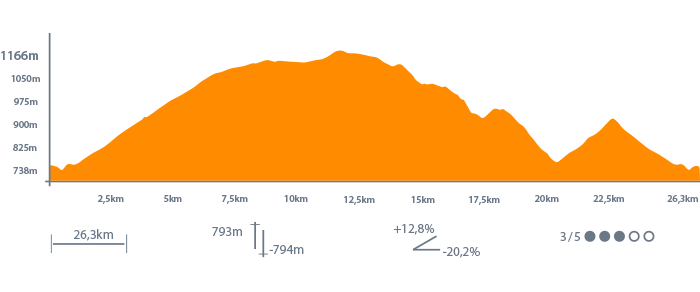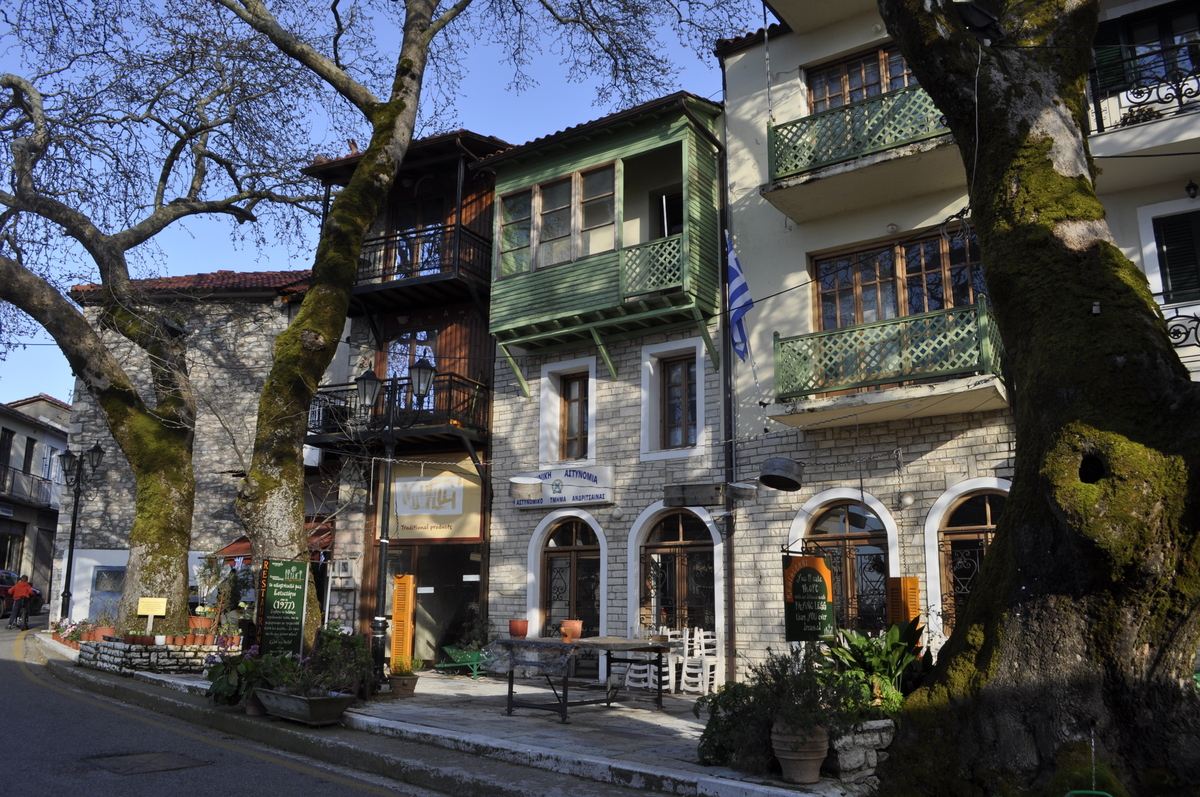Project Description
6. The Parhtenon of the Peloponnese
Andritsaina - Temple of Apollo Epicurius - Andritsaina
Trail description
This is the longest route of the network, which on one side moves downhill, and on the other side moves uphill, usually with gentle slopes. Starting from Andritsaina, on an asphalt provincial road with a continuous uphill slope and plenty of views, the route ends at the Temple of Apollo the Epicurius. From there, a dirt road returns to Andritsaina passing through oak forests, ancient springs, places of historical importance and special geological interest.

Details
| 27 km | h ‘ | 3/5 |
Starting point: Andritsaina
Ending poind: Andritsaina
Main sights: Andritsaina, Temple of Apollo Epicurius
Connected to: 5. Bucolic Landscape
Sightseeing spots
Andritsaina
An Historic town at the foot of Mount Koukourevos, northwest extension of Lycaeus. It is a beautiful city, with its traditional square, in the shadow of an centuries-old plane tree, with its picturesque cobblestone streets and many options for dining and accommodation. It attracts thousands of visitors each year. Andritsaina was the homeland of Panagiotis Anagnostopoulos, one of the four members of the Secret Society of the Friendly Society, with significant activity during the revolution but also in the later years of freedom. The city has an excellent Folklore Museum and the country’s most important Provincial Library, donated by Agathropron Nikolopoulos of andritsian origin, with thousands of rare and unique volumes from the early years of printing.
Apollo Epicurius Temple
It’s the masterpiece of Iktinos. Today it is covered by a tent designed specifically to withstand wind pressure and snow loads. The temple will be covered to protect it from extreme weather conditions as long as the restoration works are ongoing. Made of local limestone, the temple fits in wonderfully with the imposing landscape surrounding it, despite the fact that the tent-covering partially destroys this feeling. The temple was renowned in antiquity for its beauty, for its architectural virtues and also for the magical place in which the Fygals chose to build it. The marble sculptural decoration of the temple, with scenes
Centaurs and Amazonons is considered to be the work of the sculptor Paionius. Today it is on display at the British Museum. Plaster copies of the 23 embossment τ marble slabs can be admired in the Andritsaina Library building.



